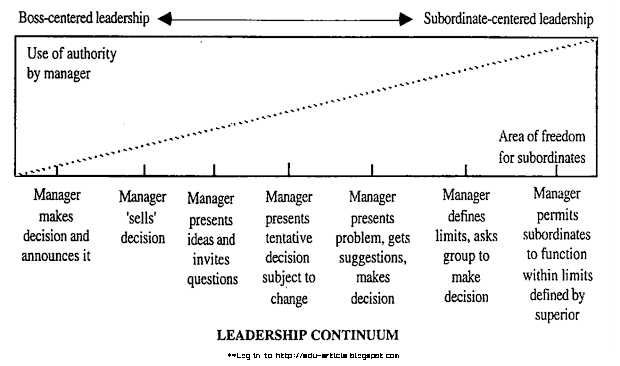Explore the Leadership Continuum: a spectrum of leadership styles, from authoritative to free-rein, tailored to achieve optimal outcomes in varying situations.
Leadership Continuum
Leadership Continuum shows a wide range of leadership style on a continuum that moves from authoritarian to free-rein. Depending on the situation and many factors; manage must determine whether directive leadership, participative leadership or something in between is the best.
R. Tannenbaum and W, H. Schmit has displayed the wide range of leadership style on a continuum that moves from authoritarian to free-rein.
It specifies five styles between the two extremes, i.e., boss-and subordinates-centered leadership. The following diagram shows this continuum;

They mentioned that a wide range of forces/factors determine whether directive leadership, participative leadership or something in between is the best. These factors fall into three groups;
Forces relating to the manager or leader
These include the manager’s personality, experience and value system, his confidence in subordinates, leadership inclination, the feeling of security in an uncertain situation, etc.
Forces relating to the subordinates
These include the readiness of subordinates to assume responsibility for making decisions, need of subordinates for independence, interest in the problem at hand, knowledge to deal with the problem, expectations about sharing in decision making, tolerance for ambiguity, etc.
Forces relating to the situation
These include organization’s preferred style, size, and nature of workgroup, group effectiveness, nature of the problem itself, time constraints, etc.
A manager can choose the appropriate leadership style.
More often than not, managers lean toward the leadership style preferred by the organization’s top bosses.